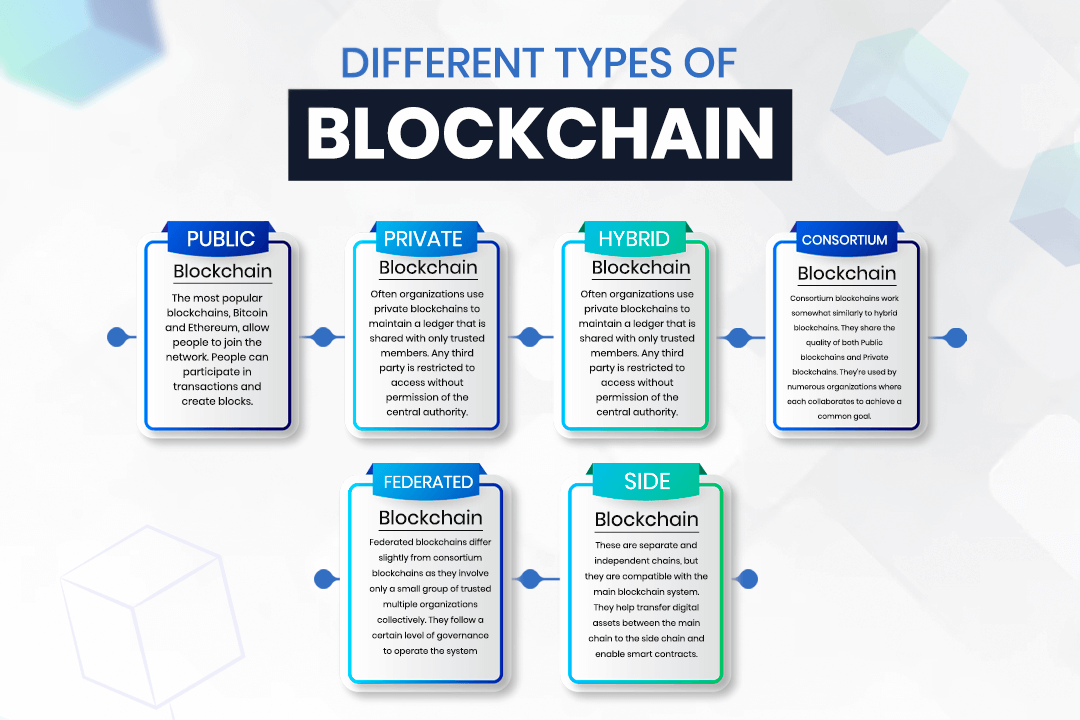The emergence of blockchain has been a game changer in recent times. It has been transforming the ways of storing data, verifying transactions, and exchanging information. But have you ever wondered about the origin of blockchain and what existed before?
First of all, you must understand that blockchain technology came into existence only to achieve what the traditional methods couldn’t do correctly. Blockchain gave solutions for security, transparency, and fault tolerance with the concept of decentralization. It provides an approach that includes multiple applications, cryptocurrencies, smart contracts, supply chains, and so on.
Pre-blockchain era
Let’s discuss some of the technologies and methods that existed before blockchain technology emerged. We’ll also see what limitation they were facing that later blockchain technology managed to resolve.
Centralized database
Limitation
Single point of failure
Access to the entire system is impossible if any failure occurs in the central server.
Lack of trust
Untrustworthy central authority can misuse and manipulate the data.
Costly intermediaries
It becomes costly when it comes to trust verification and transaction facilitation with the help of intermediaries.
Distributed database
Limitation
Lack of consensus
It often needs help achieving consensus among different nodes, making the data inconsistent and limiting scalability.
Complexity in coordination
It is complex to maintain coordination across distributed systems. Data may face synchronization issues, and conflicts may arise.
Cryptographic techniques
Limitation
Lack of transparency
Cryptography indeed ensures keeping the data confidential. However, alone, it can’t offer any transparency in the records.
Centralized dependency
Primarily, it mainly depended on a single central authority, making it easier to compromise.
Peer-to-peer networks
Limitation
Sybil attacks
Any malicious participants can create fake IDs to manipulate the data somehow and take control of the process.
Lack in efficiency
With the increased number of nodes, it faces challenges in efficient communication and consistency.
Merkle trees
Limitation
Centralized trust
Markel tree depends on a central authority to validate the tree’s root. Any compromise from central authority can put the entire tree at risk.
Limited functionality
The tree can’t handle complex transactions and smart contracts, as it was initially created only for verification and integrity.
Although we had these methods, they were lacking in many areas. As a result, the origin of blockchain technology begins with a combination of a network of decentralization, cryptography, algorithms of consensus, and structure of all data. This time it made sure to address the above limitations and provide a transparent, secure, and fraud-proof system.
How did blockchain begin? (Origin of blockchain)

In 1991, Stuart Harber and W. Scott Stormetta collaborated to lay a foundation for blockchain technology. Their research paper, “How to Time-Stamp a Digital Document,” is widely known. The paper addresses the concept of creating a digital time stamped chain with the help of cryptographic hashing.
Afterward, from 1994 to 1996, a computer scientist and legal scholar, Nick Szabo, introduced the concept of smart contracts to eliminate intermediaries. Around 1998, he also introduced a decentralized digital currency named “bit gold.” Though it could never be implemented fully, later, the idea of Bitcoin came to light based on it.
Later, in 2002, David Mazieres participated in designing Kademlia, a peer-to-peer distributed hash table. This emphasized effective performance in case of a failing environment. Furthermore, in 2004, he also contributed to designing SUNDR to secure and store data on distrustful servers.
Lastly, Satoshi Nakamoto is the most considerable by people regarding blockchain innovation. It’s a pseudonymous person or a group that published the Bitcoin whitepaper in 2008. All the various existing concepts are combined that we came to know above in the Bitcoin whitepaper. Nakamoto came up with the first practical implementation of the blockchain system. That’s where the history of the blockchain’s origin ends and the era of a decentralized blockchain-based ledger with digital currency begins.
What are the main purposes of the origin of blockchain?

Decentralization
Transparency
Security
Unalterable
What are the six layers of blockchain technology?

Physical layer
Data layer
Network layer
Consensus layer
Smart contract layer
Application layer
What are the different types of blockchains?

Public blockchain
The most popular blockchains, Bitcoin and Ethereum, allow people to join the network. People can participate in transactions and create blocks. These blockchains follow techniques of consensus mechanism, which includes PoW and PoS. Public blockchains encouraged the blockchain origin since it enables transparency and security.
Private blockchains
Hybrid blockchains
Consortium blockchains
Federated blockchains
Sidechains
Is blockchain the future? (Wrapping up)

Considering what the future blockchain holds isn’t easy to predict as the history of the origin of blockchain itself is short. However, it promises to bring more of its potential in the future. It can impact, to a great degree, to revolutionize industries like healthcare, finance, real estate, retailing, agriculture, education, entertainment, etc.
Blockchain facilitates security, transparency, and efficiency in storing data. Even so, it faces challenges with limitations as it hasn’t reached its full potential yet. It lacks to solve scalability issues, concerns about energy consumption, and some implementations. Thus, it is yet to achieve widespread adoption.
So, achieving widespread acceptance and unlocking its full potential will take some time. Numerous other factors, like advancements in the technology field and collaboration, affect its future. But, with time, blockchain will only improve with continuous research and investment for sure. The ongoing exploration and changes will help it to evolve over time.
FAQ
The answer is blockchain, as the concept of blockchain originated first in 2008 in a whitepaper to serve the digital currency Bitcoin. Later, in January 2009, a new kind of digital currency, Bitcoin, was launched. Other cryptocurrencies also started developing to support blockchain technology.
Bitcoin blockchain is the longest-running blockchain as it is the widely accepted starting point and origin of the blockchain system.
Yes, we can credit Bitcoin for introducing the practical concept of blockchain technology. Satoshi Nakamoto published a whitepaper in 2008. The paper was named “Bitcoin: A Peer-to-Peer Electronic Cash System.” And the paper says that Bitcoin, a digital currency, will be operated on a decentralized network.

Leave a Reply